- Home
- Articles
- Architectural Portfolio
- Architectral Presentation
- Inspirational Stories
- Architecture News
- Visualization
- BIM Industry
- Facade Design
- Parametric Design
- Career
- Landscape Architecture
- Construction
- Artificial Intelligence
- Sketching
- Design Softwares
- Diagrams
- Writing
- Architectural Tips
- Sustainability
- Courses
- Concept
- Technology
- History & Heritage
- Future of Architecture
- Guides & How-To
- Art & Culture
- Projects
- Interior Design
- Competitions
- Jobs
- Store
- Tools
- More
- Home
- Articles
- Architectural Portfolio
- Architectral Presentation
- Inspirational Stories
- Architecture News
- Visualization
- BIM Industry
- Facade Design
- Parametric Design
- Career
- Landscape Architecture
- Construction
- Artificial Intelligence
- Sketching
- Design Softwares
- Diagrams
- Writing
- Architectural Tips
- Sustainability
- Courses
- Concept
- Technology
- History & Heritage
- Future of Architecture
- Guides & How-To
- Art & Culture
- Projects
- Interior Design
- Competitions
- Jobs
- Store
- Tools
- More
8 Principles of Parametric Architecture You Should Know
Parametric architecture merges computational logic with creative exploration, allowing designers to generate adaptive, efficient, and visually expressive forms. These eight principles—illustrated through projects like the Heydar Aliyev Center, Queen Alia Airport, Harpa Concert Hall, and ICD/ITKE pavilions—show how algorithms, data inputs, material intelligence, and digital fabrication are reshaping contemporary design. Parametric thinking is now a driving force in creating performance-driven, innovative architecture.

Parametric architecture transforms design by merging computational logic with creative expression. Through algorithms, data inputs, and dynamic relationships, architects generate forms that are adaptive, efficient, and visually compelling. As a result, parametric thinking has become one of the most influential forces in contemporary architectural practice.
Beyond producing striking aesthetics, parametric systems allow buildings to respond to environmental data, structural behavior, and material constraints with precision. This approach reshapes how designers explore form, conduct performance analysis, and integrate digital fabrication into the construction process. In this article, we explore eight core principles of parametric architecture—paired with real-world project examples—that reveal how computation continues to redefine the future of design.
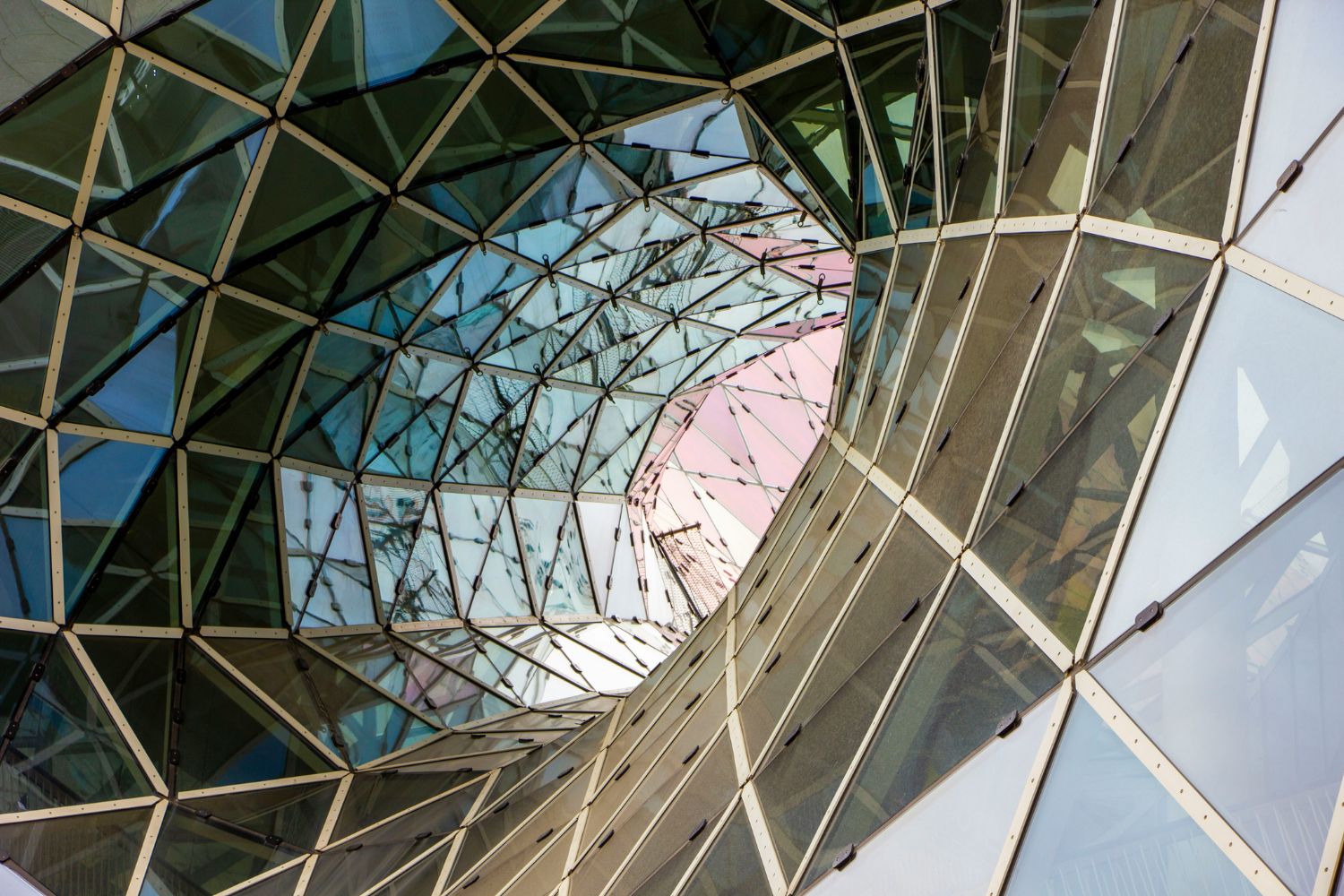
Table of Contents
Toggle1. Algorithmic Thinking
Algorithmic thinking lies at the heart of parametric design. Architects define geometric relationships, formulas, and rules that automatically generate architecture, shifting the designer’s role from manually shaping forms to constructing intelligent systems.
This approach allows for flexibility, adaptation, and exploration of complex geometries, producing forms that would be difficult or impossible to draft manually. The use of algorithms also encourages a more systematic experimentation, enabling architects to generate variations and test solutions efficiently.

The Heydar Aliyev Center in Baku (Zaha Hadid Architects, 2012) exemplifies algorithmic thinking. Its fluid geometry was generated using algorithmic rules controlling curvature continuity and façade transitions. Adjustments to parameters allowed seamless integration between roof, walls, and ground, creating a continuous, flowing form that seems both natural and futuristic.
2. Relationship-Based Geometry
Parametric design relies on interdependent elements where a change to one component automatically influences others. This ensures system-wide consistency and coherence across multiple scales.
It also allows architects to explore dynamic relationships between geometry, structure, and environmental factors, creating adaptive and responsive forms. By mapping interdependencies, designers can maintain visual harmony even in complex structures, which is particularly valuable in large-scale projects or irregular sites.
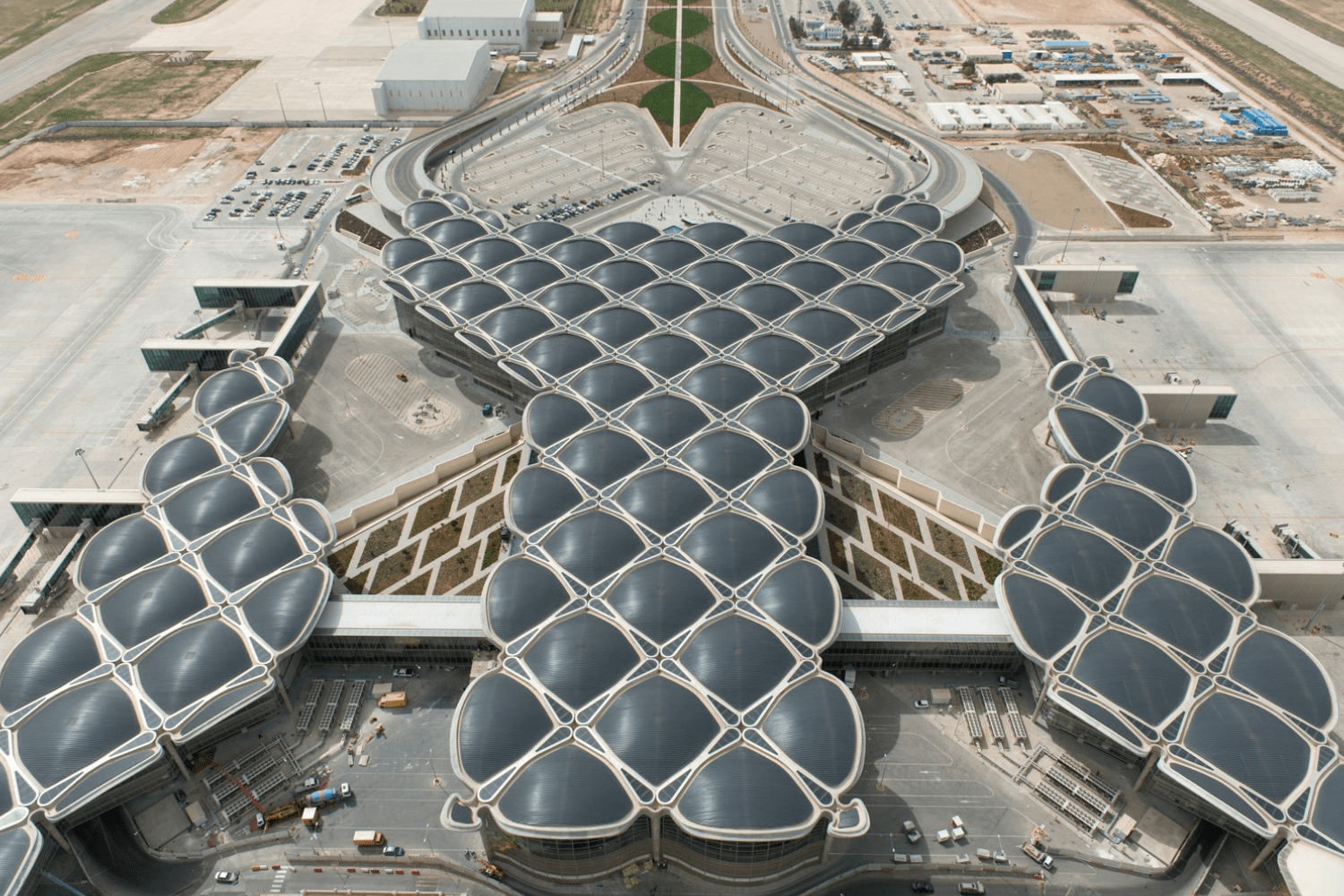
The Queen Alia International Airport in Amman (Foster + Partners, 2013) demonstrates relationship-based geometry. The modular domes were parametrically linked, so any adjustment to one dome automatically recalibrated spacing, curvature, and daylight apertures, ensuring structural and aesthetic unity across the entire terminal.
3. Variation and Iteration
Parametric tools enable rapid generation of multiple design options, making iteration a fundamental part of the creative process. Designers can explore hundreds of variations by changing parameters, evaluating options against performance and aesthetics.
Iteration enhances creativity and allows architects to test structural, environmental, and functional criteria before finalizing decisions. It also encourages designers to explore unexpected solutions that emerge from digital simulations rather than pre-conceived notions.

The Serpentine Pavilion (BIG, London, 2016) illustrates this principle. Dozens of variations of stacked fiberglass blocks were digitally tested for rotation angles and spatial porosity. The final pavilion emerged from this iterative parametric exploration, resulting in a luminous and cave-like structure that responds to light and movement dynamically.
4. Data-Driven Design
Parametric architecture integrates environmental data, structural, and contextual information into design decisions. Sun paths, wind loads, thermal performance, and acoustic requirements can shape the form, making architecture responsive rather than static.
By relying on data inputs, architects optimize both aesthetics and functionality simultaneously. This data-driven approach also allows designers to reduce resource waste, improve energy efficiency, and design more sustainable buildings.
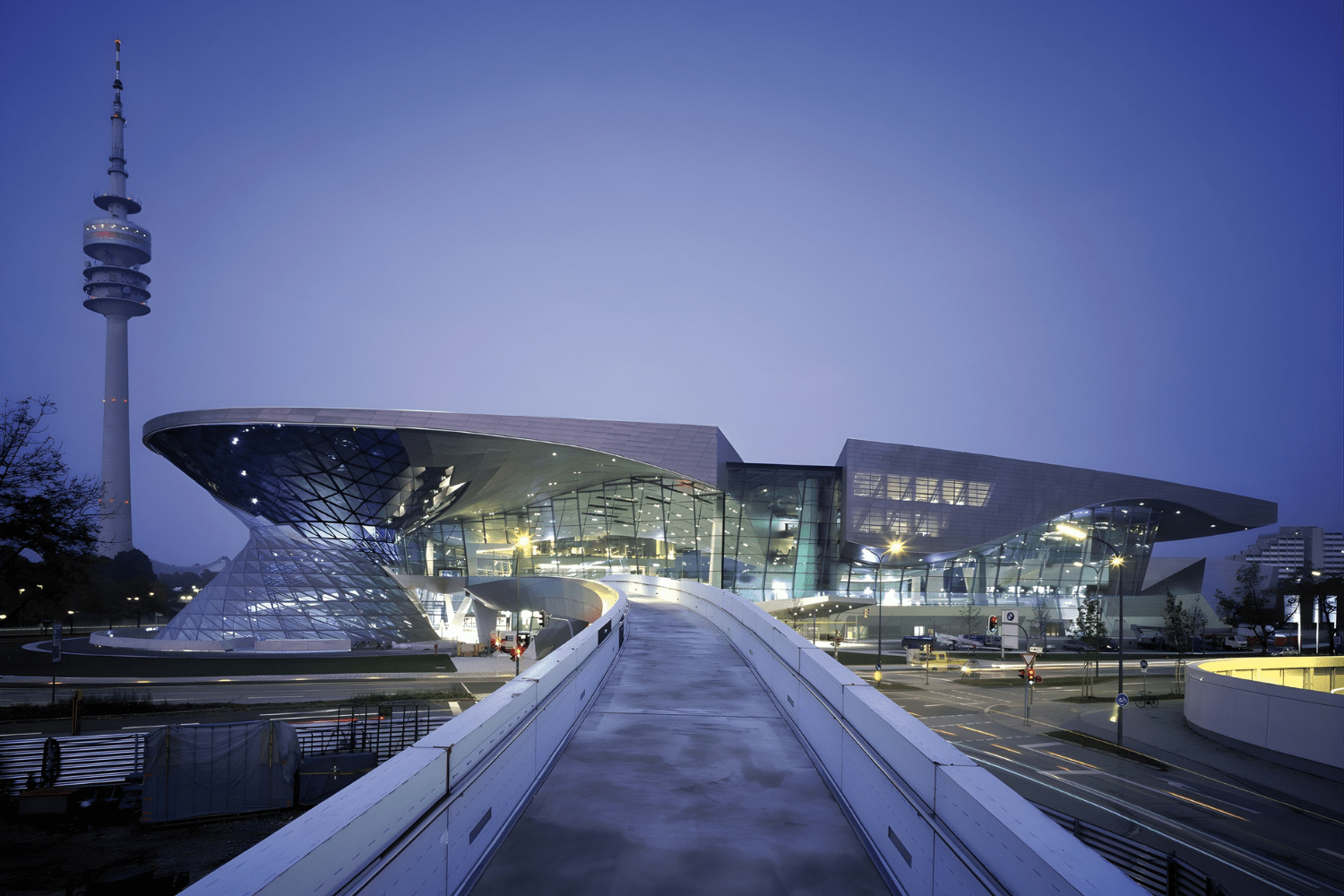
The BMW Welt in Munich (Coop Himmelb(l)au, 2007) exemplifies data-driven design. The cloud-like steel roof curvature was informed by wind, daylighting, and structural data, optimizing performance while enhancing aesthetic expression and creating a visually dynamic experience for visitors.
5. Optimization and Performance
Optimization algorithms refine architectural forms based on measurable goals, such as daylighting, energy efficiency, and shading. This ensures the design is both functional and visually compelling.
Parametric optimization allows architects to balance multiple criteria simultaneously, producing forms that meet structural and environmental performance goals. By integrating optimization early in the design process, architects can save costs, improve construction efficiency, and create more durable, high-performing buildings.
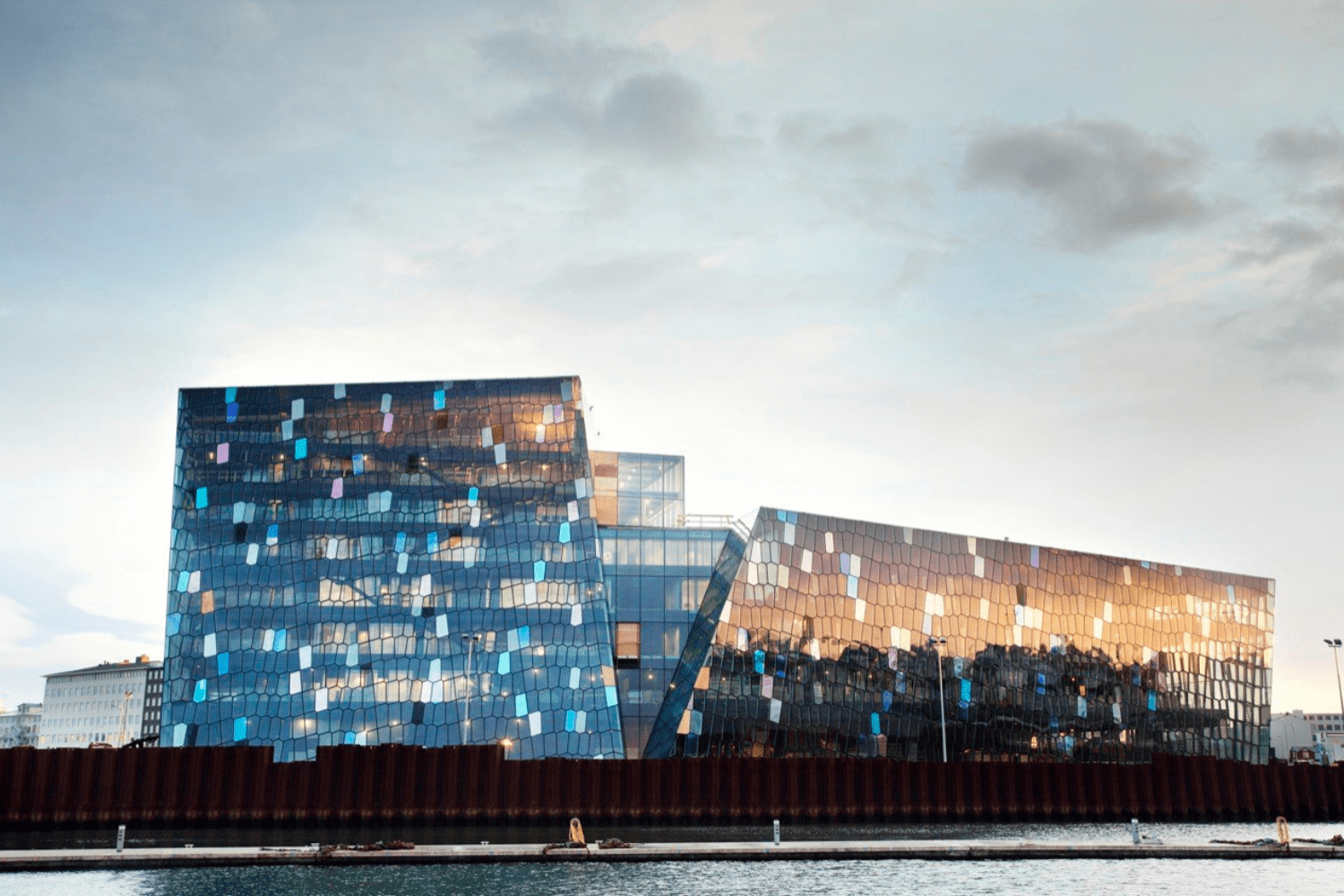
The Harpa Concert Hall in Reykjavik (Henning Larsen, 2011) showcases optimization in parametric design. Its crystalline façade was parametrically adjusted to control thermal gain and interior lighting, creating a visually striking and energy-conscious building that interacts dynamically with its environment.
6. Non-Linear and Adaptive Forms
Parametric design liberates architecture from linear geometries, allowing complex curves, double-curved surfaces, and organic forms. These adaptive forms respond to site, programmatic requirements, and environmental inputs.
Non-linear forms create fluid spatial experiences and enable architects to evoke natural systems or sculptural qualities within built environments. Such flexibility also facilitates the integration of structural systems, façade patterns, and landscape elements into cohesive, responsive designs.

The Ordos Museum in Inner Mongolia (MAD Architects, 2011) embodies non-linear and adaptive parametric design. Its dune-like stainless steel shell was generated using curvature gradients and panel layouts, allowing it to harmonize with the desert environment while creating a sculptural identity.
7. Material Intelligence
Parametric design incorporates material behavior, including bending limits, tensile strength, and flexibility, into the design process. This ensures that complex geometries are buildable and structurally sound.
By considering materials during form generation, architects can create efficient structures that optimize performance while remaining visually innovative. Simulation of material behavior reduces risk, allows for lighter structures, and encourages experimentation with novel construction techniques.

The ICD/ITKE Research Pavilion (Stuttgart, various years) demonstrates material intelligence. Each pavilion uses parametric simulations that respond to bending behavior and fiber tension, producing lightweight yet structurally efficient installations while pushing the boundaries of engineering.
8. Digital Fabrication Integration
Parametric models are connected to digital fabrication processes such as CNC milling, robotic assembly, modular casting, and 3D printing. This integration enables high precision and mass customization.
It also allows designers to explore complex geometries efficiently in the physical world, bridging digital design and construction seamlessly. This process reduces human error and ensures that intricate parametric designs can be realized accurately.
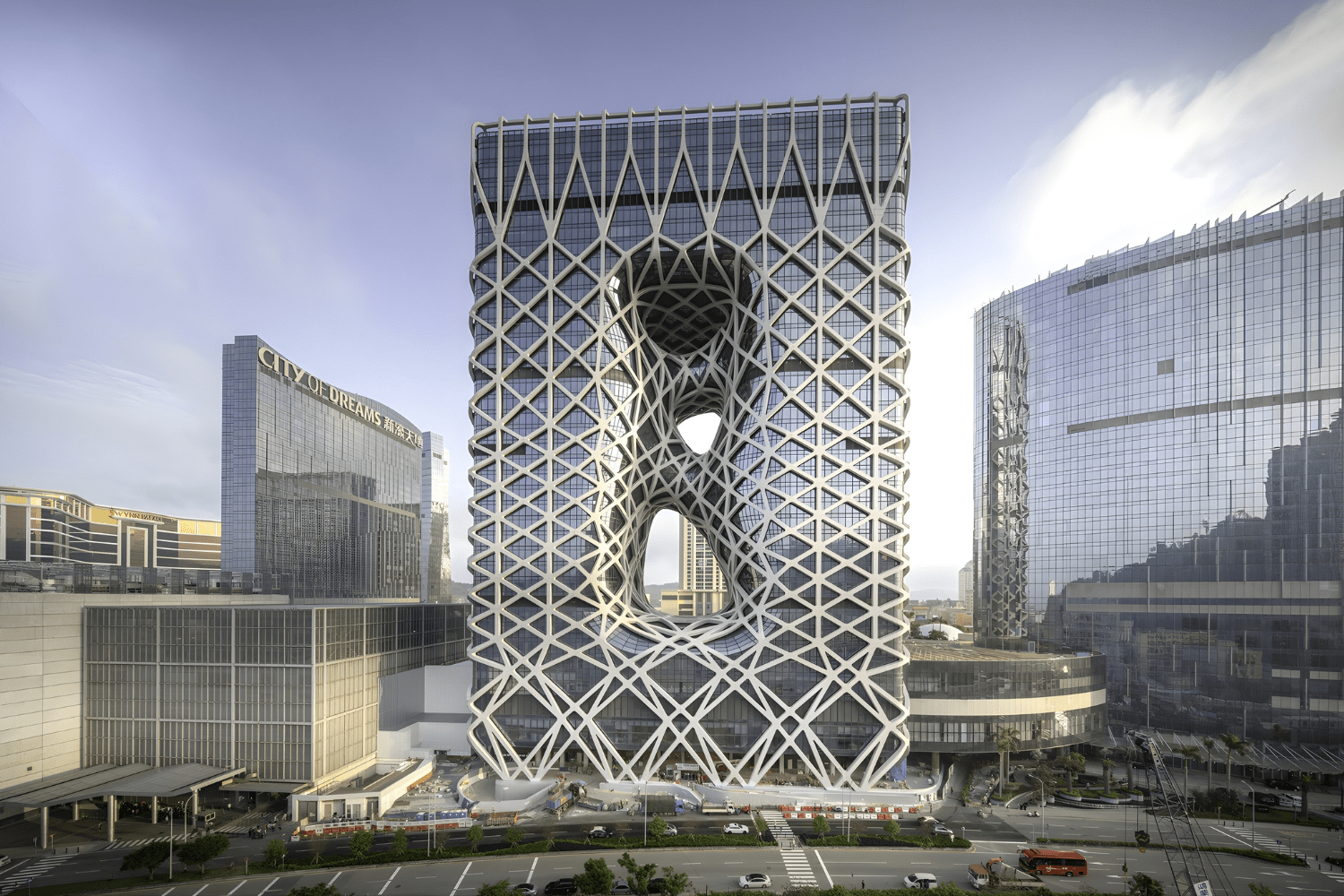
The Morpheus Hotel in Macau (Zaha Hadid Architects, 2018) illustrates digital fabrication integration. Its exoskeleton façade, composed of hundreds of unique steel members, was fabricated using robotic technologies, ensuring precise execution of the parametric design.
Parametric architecture reshapes how buildings are conceived and constructed, merging algorithmic systems with performance-driven logic. These eight principles—supported by real architectural examples—show how parametric thinking enables more adaptive, expressive, and efficient design outcomes. As computational tools evolve, parametric design continues to define the future of architectural innovation.

By integrating algorithms, material intelligence, and environmental responsiveness, architects can achieve forms that are both functional and visually striking. Parametric approaches also enhance collaboration between design, engineering, and fabrication teams, ensuring precision from concept to construction. Ultimately, parametric architecture bridges creativity and technology, allowing designers to explore possibilities that were previously unimaginable, shaping the next generation of built environments. With sustainability, optimization, and digital precision becoming increasingly essential, parametric design is not just a tool—it’s a paradigm for the future of architecture.
- algorithmic modeling techniques
- computational architecture 2025
- computational design methods
- data-driven design in parametric architecture
- digital fabrication techniques for parametric structures
- essential rules of parametric thinking in architecture
- examples of parametric design in architecture
- generative design processes for innovative buildings
- integration of environmental analysis in parametric workflows
- parametric architectural concepts
- parametric architecture principles
I create and manage digital content for architecture-focused platforms, specializing in blog writing, short-form video editing, visual content production, and social media coordination. With a strong background in project and team management, I bring structure and creativity to every stage of content production. My skills in marketing, visual design, and strategic planning enable me to deliver impactful, brand-aligned results.
Submit your architectural projects
Follow these steps for submission your project. Submission FormLatest Posts
Top 10 Examples of Parametric Architecture Around the World
Parametric architecture is reshaping global design through computational tools that generate fluid...
10 Notable Architects Who Excel in Parametric Design
Discover 10 leading architects who excel in parametric design, showcasing how computation,...
Parametric Design in Bridge Architecture: From Idea to Ribbon-Cut
Parametric design in bridge architecture: how data, rules, and optimization speed iterations,...
Parametric Thinking: Geometry as a Design Tool
Learn how parametric thinking geometry as a design tool links form to...












Leave a comment